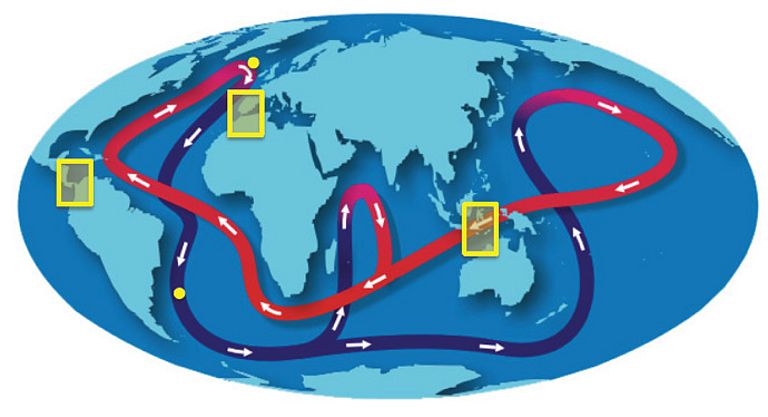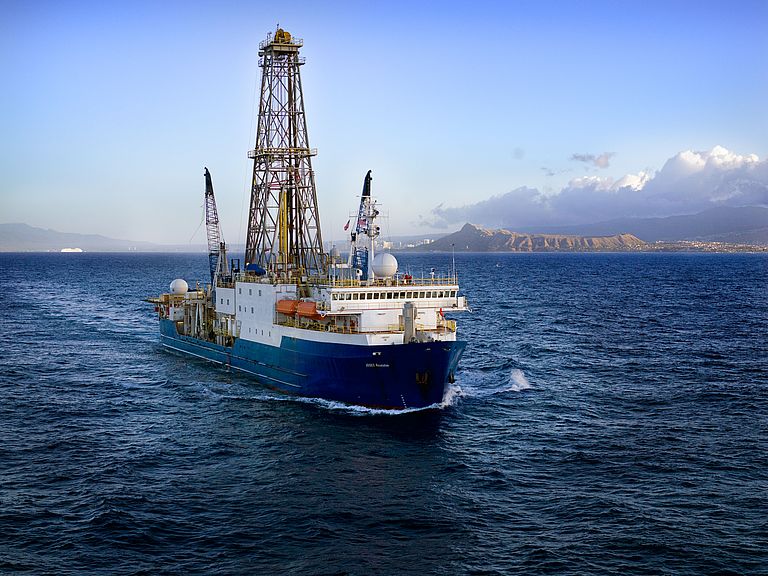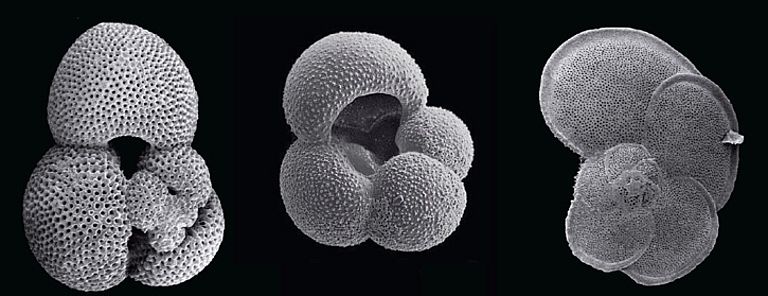How the North Atlantic became a “heat pirate”
International research team unravels how seaways affect global climate
Ocean currents are massively influencing our climate - the Gulf Stream transports so much ocean heat from the tropical Atlantic northward that the winters in northwest Europe are relatively mild and humid relative to other regions at similar latitudes. At the same time, the northward heat transfer causes cooling in the South Atlantic, a process which is called “heat piracy”. From a geological perspective, the today’s pattern of ocean circulation is in fact relatively young. It has developed mainly during the Pliocene era, which is approximately six to two and a half million years before today.
The movements of the Earth´s lithospheric plates were pivotal for the opening and closing of oceanic seaways. The extent to which today's heat piracy of the North Atlantic has developed due to tectonic changes has so far been known only rudimentary. Based on new studies, an international team of paleoceanographers including scientists from GEOMAR Helmholtz Centre for Ocean Research Kiel describes these relationships in the current issue of the international scientific journal Scientific Reports.
Deep sea drilling in the North and South Atlantic oceans served as the basis for the new findings. In the ocean deposits, the fossils of single-celled microorganisms that formerly lived in the surface ocean are trapped. “If we measure isotopes and trace metals in these so-called foraminifera, the data allow us to reconstruct the physical boundary conditions of past oceans, for example the sea temperatures, at high accuracy”, explains the first author of the study Dr. Cyrus Karas, who conducted his studies at GEOMAR and the Lamont Doherty Earth Observatory, USA.
“The Pliocene in fact is an epoch in Earth history, which is characterized by extremely dynamic plate-tectonic movements”, says Dirk Nuernberg from GEOMAR, co-author of the study. “Our study shows that the tectonic changes in the Strait of Gibraltar in the Mediterranean, the formation of the Central American land bridge, and the constriction of the Indonesian Seaway have had immense subsequent impacts on the global oceanic overturning circulation over time, and thus on the temperatures in the North and South Atlantic”.
Approximately 5.3 million years ago, a change in the Mediterranean throughflow weakened the Atlantic Overturning Circulation, which led to warming of the South Atlantic relative to the North Atlantic. Subsequently, between 4.8 and 3.8 million years ago, the oceanic connection between the Atlantic and Pacific oceans narrowed and finally closed with the formation of the Central American landbridge. This tectonic process intensified the Gulf Stream, which caused warming of the North Atlantic by circa two degrees Celsius at the expense of the South Atlantic - expressing active heat piracy of the North Atlantic, which lasts until today.
With the tectonic constriction of the Indonesian Throughflow between 3.8 and three million years ago, a weakening of the global overturning circulation became evident from the geochemical data, which is also related to the beginning glaciation of the Northern Hemisphere. “The importance of our paleoceanographic study is to provide evidence of how local tectonic changes have radically altered the ocean temperatures in the North and South Atlantic and thus, effectively influenced global climate”, Dr. Cyrus Karas concludes.
Note:
The research was funded by the German Research Foundation (DFG) as well as funding from the Lamont-Doherty Earth Observatory (USA) and the Max-Kade Foundation. The processed sediment material was obtained within the framework of the "International Ocean Discovery Program" (https://iodp.tamu.edu/).
Reference:
Karas, C., D. Nuernberg, A. Bahr, J. Groeneveld, J.O. Herrle, R. Tiedemann and P.B. deMenocal, 2017: Pliocene oceanic seaways and global climate. Scientific Reports, 7: 39842, dx.doi.org/10.1038/srep39842
Contact:
Jan Steffen (GEOMAR, Communication & Media), Tel .: 0431 600-2811, presse(at)geomar.de





